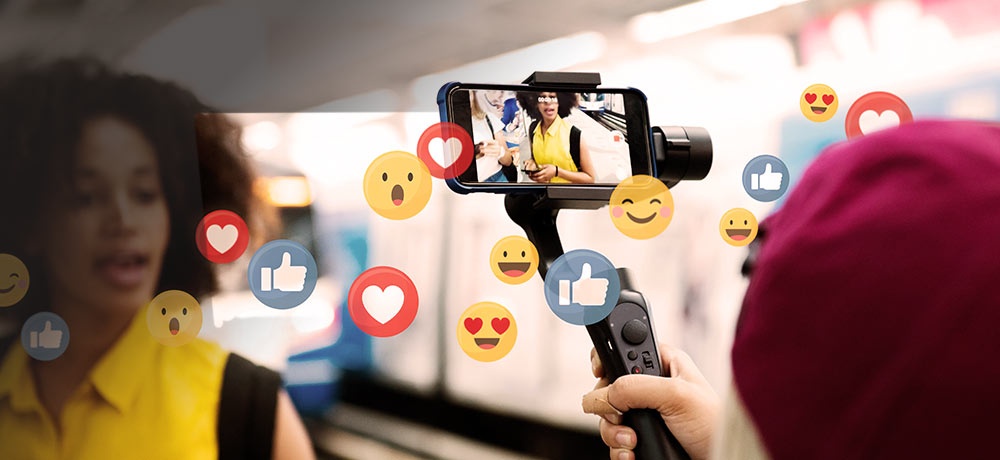Crafting Irresistible Calls to Action that Convert Website Visitors
They've browsed your website, explored your content, and even lingered on a product page. Now, what do you want them to do? That's where the magic of the call to action (CTA) comes in. A well-crafted CTA is the bridge between website visitor and engaged customer, the gentle nudge that turns curiosity into action. But how do you craft CTAs that are truly irresistible, ones that convert visitors into leads and leads into loyal customers?
Know your audience:
It all starts with understanding your ideal customer. What are their needs, desires, and pain points? Speak their language, address their concerns, and offer solutions that resonate. A generic "Buy Now" might work for some, but a targeted "Unlock Your Dream Kitchen Today" for someone browsing kitchen renovation services will be far more impactful.
Clarity is king:
Don't leave your visitors guessing. Your CTA should be clear, concise, and instantly tell them what clicking will achieve. "Subscribe for Exclusive Offers" leaves no room for doubt, while "Learn More" is vague and uninspiring.
Action verbs fuel desire:
Use strong action verbs that create a sense of urgency and excitement. "Download Your Free Ebook" is more engaging than simply "Ebook." Words like "Start," "Get," "Join," and "Discover" spark a desire to act.
Benefits, not features:
Focus on the benefits your offer provides, not just the features. Instead of "Sign Up for Our Newsletter," highlight the value: "Get Insider Tips & Exclusive Discounts."
Scarcity creates urgency:
Limited-time offers, limited quantities, or early access opportunities can create a sense of urgency and encourage immediate action. "Limited Spots Left! Register for the Webinar Now" is more likely to get clicks than "Join Our Webinar."
Design matters:
Don't let your CTA blend into the background. Use contrasting colors, clear fonts, and strategic placement to make it stand out. A well-designed button can be the difference between a click and a scroll-by.
Test and refine:
Don't assume you've nailed it on the first try. A/B test different CTAs, track their performance, and adjust your approach based on the data. What resonates with one audience might not work for another, so be flexible and data-driven.
Remember:
A great CTA isn't just a button; it's an invitation, a promise, and a bridge to a deeper relationship with your brand. By understanding your audience, focusing on clarity, benefits, and urgency, and testing different approaches, you can craft CTAs that are truly irresistible, converting website visitors into loyal customers and propelling your business forward.
Bonus tip: Don't forget the power of personalization! Dynamic CTAs that adapt to user behavior or previous interactions can be even more effective in driving conversions.
Now go forth and craft those irresistible CTAs! Remember, the right words and design can make all the difference in turning website visitors into happy customers.
Need help with digital marketing? Our marketing experts are ready to help! Book a free consultation with us and let’s bring your business to life!
Unleashing the Power of Creativity: Guerrilla Digital Marketing for the Curious
In the ever-evolving digital landscape, standing out from the crowd can be a challenge. Traditional marketing methods often feel like a sea of sameness, leaving you wondering how to break through the noise and capture attention. That's where guerrilla digital marketing comes in, offering a refreshingly unconventional approach to marketing that's sure to pique your curiosity.
Guerrilla digital marketing isn't about breaking the bank or crossing ethical lines. It's about tapping into your inner marketing maverick, embracing creativity, and using low-cost, ingenious tactics to make a lasting impression.
But before you dive headfirst into the world of guerrilla marketing, let's explore the pros and cons to help you make an informed decision.
Pros:
Low-cost effectiveness: Guerrilla campaigns don't require a hefty marketing budget. With a bit of imagination and resourcefulness, you can achieve remarkable results with simple yet effective strategies.
Unconventional brilliance: Guerrilla marketing encourages you to think beyond the ordinary, to come up with innovative ways to connect with your audience and spark conversations.
Engagement agnet: Guerrilla campaigns are designed to make your brand the talk of the town, generating excitement and buzz that can elevate your online presence.
Cons:
Measurement enigma: Guerrilla campaigns can be tricky to quantify. Their effectiveness may not always translate directly into sales or leads, making it challenging to assess ROI.
Audience perception: It's crucial to ensure your guerrilla tactics resonate with your target audience. Avoid anything that could be perceived as unprofessional or offensive, potentially damaging your brand reputation.
Legal considerations: Respect copyright laws and privacy regulations. Stay within the boundaries of what's acceptable and ethical.
The question now is, is guerrilla marketing right for your business?
Target sudience: If your target audience comprises tech-savvy millennials or Gen Z, guerrilla marketing's unconventional style will likely resonate with them.
Brand image: Guerrilla marketing aligns well with brands that embrace boldness, creativity, and a touch of irreverence.
Marketing goals: If your primary objective is to generate buzz, drive traffic, and build a strong online presence, guerrilla marketing can be a powerful tool.
Seeking expert guidance: While guerrilla marketing offers a unique opportunity to stand out, it's crucial to approach it with careful planning and consideration. Partner with experienced marketing professionals who can guide you in developing effective guerrilla campaigns that align with your brand and target audience.
Now that you've had a taste of the world of guerrilla digital marketing, let curiosity pique your interest and spark your imagination. Explore the unconventional, embrace creativity, and unleash the power of guerrilla marketing to elevate your brand and elevate your business.
Book a free consultation with our experts at Webware today to discover how guerrilla digital marketing can help you achieve your marketing goals and leave a lasting impression on your audience.
Bundling Up Small Business Services for a Warmer Welcome
As the temperatures drop and snowflakes start to fall, homeowners turn their attention to winterizing their homes to ensure they're comfortable and safe throughout the chilly months. This presents a unique opportunity for small service-based businesses to bundle together related services and offer attractive packages that address the specific needs of homeowners during this time.
The power of bundling
Bundling services can be a win-win proposition for both businesses and customers. For businesses, bundling offers several advantages, including:
Increased sales: Bundling multiple services into a single package can make the overall offer more appealing to customers, leading to higher sales volume.
Improved profitability: By combining services, businesses can reduce overhead costs, such as travel time and equipment usage, which can boost profitability.
Enhanced customer satisfaction: Bundling services can provide customers with a comprehensive solution, saving them time and money. This can lead to increased customer satisfaction and loyalty.
Creating winning bundles
When creating service bundles, it's important to carefully consider the needs of your target customers and the specific services you offer. Here are some tips for creating winning bundles:
Identify complementary services: Choose services that naturally complement each other and address common winter-related concerns. For example, you could bundle chimney cleaning with furnace maintenance or offer a package that includes snow removal, gutter cleaning, and ice dam prevention.
Consider cross-selling opportunities: If you offer a variety of services, explore opportunities to cross-sell complementary services within the bundle. For instance, if you offer plumbing services, you could include a drain cleaning or water heater tune-up as part of a winterization package.
Prioritize value: When pricing your bundles, focus on providing customers with exceptional value for their money. Consider offering discounts or promotions to make your bundles even more attractive.
Promoting your bundled services
Once you've created your service bundles, it's important to promote them effectively to reach potential customers. Here are some effective marketing strategies:
Leverage your website and social media: Include information about your bundled services on your website and social media pages. Use engaging visuals and clear descriptions to highlight the benefits of each bundle.
Send email campaigns: Segment your email list and send targeted emails to customers who are likely to be interested in winterizing services. Promote your bundles with compelling subject lines and informative content.
Partner with local businesses: Collaborate with other businesses in your area to cross-promote your bundled services. Offer exclusive discounts or promotions to customers who book through your partners.
Attend community events: Participate in local events and fairs to showcase your bundled services to potential customers. Offer demonstrations or giveaways to attract attention.
Track your results: Monitor the performance of your marketing campaigns by tracking website traffic, social media engagement, and leads generated from your bundled services. Use this data to refine your strategies and improve your results.
By following these tips, you can create and promote effective service bundles that attract new customers, boost sales, and increase your profitability during the winter months.
Book a free consultation with our experts at Webware today to discover more on bundling services as a great way to provide customers with comprehensive solutions, enhance your brand reputation, and establish yourself as a trusted resource for winter home care needs.
Winter Wonderland: How to Thrive in the Off-Season as a Home Services Business
As the snow starts to fall and the days grow shorter, many home services businesses face a common challenge: a decline in customer demand. While the winter months may not be the busiest time for services like landscaping or pool maintenance, this doesn't mean your business has to take a backseat. By implementing strategic marketing campaigns during the off-season, you can not only maintain your visibility but also generate new leads and build brand loyalty. Here are five key reasons why off-season marketing is crucial for home services businesses:
1. Stay Top of Mind During the Slow Season
While it may seem counterintuitive, marketing during the off-season is essential for keeping your brand fresh in the minds of potential customers. When you're not actively bidding on projects or providing services, your competitors may be taking a break from marketing. This gives you a unique opportunity to stay visible and build anticipation for your services when the next busy season arrives.
2. Offer Seasonal Services and Packages
While some services may be less popular during the winter, there are still plenty of ways to keep your business busy. Consider offering seasonal services such as winterizing pipes, snow removal, or chimney cleaning. You can also create special packages or discounts that appeal to customers looking for ways to prepare for the winter months.
3. Engage Your Existing Customers
Don't forget about your existing customers! During the off-season, it's a great time to reconnect with them and show them how much you appreciate their business. Send out email newsletters with tips for winterizing their homes, offer discounts on regular maintenance, or host a special event for your loyal customers.
4. Leverage Social Media and Email Marketing
Social media and email marketing are powerful tools that can help you reach a wider audience during the off-season. Create engaging content that showcases your expertise, shares seasonal tips, or promotes special offers. Run targeted social media ads to reach potential customers in your area. And don't forget to nurture your email list with regular newsletters and updates.
5. Partner with Local Businesses
Collaborating with local businesses can help you expand your reach and reach new customers. Partner with restaurants or retail stores to offer discounts or promotions to their customers. Sponsor local events or community initiatives. By getting involved in your community, you can increase brand awareness and establish yourself as a trusted resource in the area.
By following these strategies, you can ensure that your home services business remains visible and profitable throughout the year. Remember, off-season marketing isn't about generating immediate sales; it's about building relationships, establishing brand loyalty, and preparing for a strong comeback when the busy season arrives.
Let Webware guide you in crafting compelling service bundles that will make your business the go-to destination for homeowners seeking comprehensive winter home care solutions. Book a free consultation today and watch your business flourish during the chilly season.
Revolutionizing 2024: Unveiling the Game-Changing Digital Marketing Trends
Welcome to the future of digital marketing! The ever-evolving realm of online advertising is on the brink of an exhilarating transformation in 2024. Brace yourself for a groundbreaking journey through the trends set to redefine the way businesses connect with their audiences in the digital sphere.
1. The metaverse takeover: enter a new digital frontier
Prepare to step into the Metaverse, a digital universe where brands will create immersive experiences beyond imagination. In 2024, savvy marketers will carve out virtual spaces, establishing digital storefronts, and hosting interactive events, revolutionizing consumer engagement. Embracing the Metaverse will enable brands to forge deeper connections in an unprecedentedly immersive landscape.
2. NFTs: beyond buzzwords to brand engagement goldmines
Non-Fungible Tokens (NFTs) are not just a buzzword anymore; they're the future of brand engagement. Witness how NFTs will disrupt traditional marketing by offering exclusive digital assets and limited-edition content. Brands leveraging NFTs will create a sense of exclusivity and ownership, redefining consumer-brand relationships and loyalty in entirely novel ways.
3. AI-powered personalization: your marketing, their perfect world
In 2024, Artificial Intelligence (AI) will elevate personalized marketing experiences to unprecedented heights. Advanced AI algorithms will analyze vast consumer data, empowering marketers to deliver hyper-personalized campaigns tailored to individual preferences. Witness how AI shapes marketing strategies, making every interaction feel uniquely crafted for the consumer.
4. Storyliving: immersive narratives capture hearts and minds
Experience the power of 'storyliving.' It's more than storytelling; it's about creating immersive narratives that captivate audiences. Brands will harness the art of storytelling across multiple platforms, using compelling visuals and interactive content to create emotional connections and resonate deeply with consumers.
5. Voice commerce: the rise of conversational purchases
2024 will witness the burgeoning trend of voice commerce as more users embrace smart speakers and voice-activated devices. Brands will optimize for voice search, revolutionizing the way consumers interact and make purchases. Voice-driven shopping experiences will redefine convenience and ease in the consumer journey.
Conclusion
The digital marketing landscape in 2024 promises a seismic shift in how brands engage with their audiences. As we embrace the Metaverse, NFTs, AI-driven personalization, immersive storytelling, and voice commerce, the stage is set for an exhilarating era of innovation and consumer-centric marketing strategies.
Are you ready to seize the future of digital marketing? Join the journey and witness firsthand the monumental transformations that await in 2024! Book a free call with our marketing experts today!
Digital Marketing's Rocketing Growth: The Speedy Surge Ahead Will Leave You Breathless!
Hold on tight as we delve into the exhilarating realm of digital marketing—a domain experiencing exponential growth poised to surge even further in the years ahead. The landscape of online advertising is not merely evolving; it's undergoing a revolution, and the pace of change is unprecedented.
1. Hyper-speed evolution: digital marketing's quantum leap
The growth trajectory of digital marketing is akin to a speeding bullet train, hurtling towards uncharted territories. By 2024 and beyond, this growth is set to skyrocket as businesses increasingly shift their focus from traditional methods to the expansive realm of online platforms.
2. Mobile mastery: the unstoppable rise of mobile marketing
The future of digital marketing is mobile-first and mobile-centric. With an ever-growing number of smartphone users, brands are harnessing the power of mobile marketing to engage consumers on-the-go. From mobile-optimized websites to app-based experiences, the digital landscape is swiftly adapting to cater to this mobile-savvy audience.
3. The data goldmine: Insights driving unparalleled precision
In the coming years, data will reign supreme. Marketers will leverage Big Data analytics to unravel valuable insights into consumer behavior, preferences, and trends. This treasure trove of information will fuel highly targeted and personalized marketing campaigns, optimizing the return on investment and driving unparalleled precision in advertising strategies.
4. AI takeover: marketing's game-changing revolution
Artificial Intelligence (AI) is not just a trend; it's the driving force behind the future of digital marketing. AI-powered tools and algorithms will automate processes, analyze consumer data, and optimize campaigns in real-time. This transformative technology will revolutionize how marketers engage with audiences, making marketing smarter, faster, and more efficient.
5. Expansion influencer marketing and user-generated content
The influence of influencers is set to soar even higher. Brands will continue to collaborate with influencers across various niches to amplify their reach and engage with highly targeted audiences. Moreover, user-generated content will take center stage, as brands encourage consumers to participate in creating authentic, relatable content that fosters brand advocacy and trust.
Conclusion
Buckle up for an exhilarating ride through the rapidly expanding universe of digital marketing. As we hurtle towards the future, the pace of innovation, coupled with advancements in technology and consumer behavior, will drive the unprecedented growth of digital marketing. Brands that embrace these changes and adapt swiftly will thrive in this dynamic and ever-evolving landscape.
Join us on this exhilarating journey into the future of digital marketing! Embrace innovation, adapt swiftly, and thrive amidst the evolving landscape by connecting with our expert team today.
The Role of Social Media in Customer Service: How to Use Social Media to Improve Your Customer Experience
Social media has become an essential tool for businesses to connect with their customers. One of the most significant benefits of social media is its ability to improve customer service. Social media platforms provide businesses with a direct line of communication with their customers, allowing them to respond quickly to inquiries, resolve issues, and provide personalized support. Here are some tips on how to use social media to improve your customer experience:
Have dedicated customer service channels: Use your business profile for customer service inquiries. It's a great opportunity to provide quick and efficient responses to customer inquiries, and it shows that you value their feedback.
Keep your blog updated: Make sure to keep your blog updated with relevant and interesting content for your followers. When you successfully resolve a customer issue, consider writing a blog post about it. You can use a customer service tag to create a library of issues and resolutions, similar to an FAQ but with more storytelling and personality.
Keep your eyes open and be proactive: Monitor your social media channels for customer inquiries and complaints. Respond quickly and proactively to any issues that arise, and use social listening tools to identify potential issues before they become major problems.
Learn from previous mistakes: Use customer feedback to improve your products and services. If you receive negative feedback, take it as an opportunity to learn and improve.
Assign conversations to the right team: Make sure that customer inquiries are assigned to the right team member. This ensures that customers receive the most accurate and helpful responses.
Improve response times: Responding quickly to customer inquiries is essential for providing excellent customer service. Use social media management tools to streamline your response times and ensure that no inquiries fall through the cracks.
By using social media to improve your customer experience, you can build stronger relationships with your customers and increase customer loyalty. Social media can also help you identify areas for improvement and provide valuable insights into your customers' needs and preferences.
How Webware Can Help
Webware.io offers a range of marketing solutions that can help small businesses improve their customer experience on social media. With Webware's social media management services, businesses can monitor their social media channels, respond quickly to customer inquiries, and track the success of their social media campaigns. Webware's platform also provides businesses with a centralized and branded destination to send micro-influencers and passionate advocates, streamlining influencer management and quickly growing a creator community.
If you're interested in learning more about how Webware can help you improve your customer experience on social media, book a demo with us today. Our team of experts can provide you with personalized insights and strategies to help you achieve your marketing goals.
The Rise of Micro-Influencers: How to Leverage Their Power for Your Brand
Influencer marketing has become a popular strategy for brands looking to connect with their target audience. However, the rise of micro-influencers is changing the game in influencer marketing. Micro-influencers are individuals with a smaller following on social media platforms, typically between 1,000 and 100,000 followers. While they may not have the same reach as macro-influencers, micro-influencers offer several advantages for brands, including a highly targeted audience, cost-effectiveness, and personalized collaborations.
One of the key advantages of micro-influencers is their authenticity and trustworthiness. Micro-influencers tend to engage more actively with their audience, responding to comments, initiating conversations, and building relationships with their followers. This two-way communication fosters a sense of community and trust, making their audience feel valued and appreciated. Consequently, when micro-influencers endorse a product or service, their followers perceive it as a genuine recommendation rather than a paid advertisement.
Here are some tips on how to leverage the power of micro-influencers for your brand:
Define your goals: Before you start working with micro-influencers, it's important to define your goals and objectives. What do you want to achieve with your marketing campaign? Are you looking to increase brand awareness, drive sales, or improve customer engagement? Defining your goals will help you identify the right micro-influencers for your brand.
Find the right micro-influencers: The key to success with micro-influencer marketing is finding the right influencers for your brand. Look for influencers who align with your brand values and have a highly engaged audience that matches your target demographic. You can use tools like Stackla's Organic Influencers or search your brand's mentions and branded hashtags to find the most authentic and relevant micro-influencers.
Create personalized collaborations: Micro-influencers can deliver personalized collaborations that align with your brand's messaging and values. With their smaller audience size, micro-influencers can dedicate more time and attention to each collaboration, resulting in more tailored content that resonates with your target audience.
Tell your brand story: Use micro-influencer content to tell your brand story and connect with your audience on a deeper level. What is the why behind your business, and what pain point brought you or your founder to create the business? Use this story in your messaging and provide your influencers with background information and talking points to create authentic and engaging content.
How Webware Can Help
Webware.io offers a range of marketing solutions that can help businesses leverage the power of micro-influencers for their brand. With Webware's social media management services, businesses can identify the right micro-influencers for their brand, create personalized collaborations, and track the success of their campaigns. Webware's platform also provides businesses with a centralized and branded destination to send micro-influencers and passionate advocates, streamlining influencer management and quickly growing a creator community.
If you're interested in learning more about how Webware can help you leverage the power of micro-influencers for your brand, book a demo with us today. Our team of experts can provide you with personalized insights and strategies to help you achieve your marketing goals.
Common Digital Marketing Mistakes and How Webware.io Can Assist
In the digital age, successful marketing is crucial for businesses to thrive. Nevertheless, many companies encounter common challenges in their digital marketing endeavors. Here, we'll explore these challenges and offer how Webware.io can provide genuine assistance in overcoming them.
1. Neglecting a data-driven approach
A lack of data-driven strategy often hinders success. With no insights into your audience's preferences, campaigns may miss the mark.
How we assist: At Webware.io, we provide a comprehensive platform that allows you to gather, analyze, and act upon your data. Our reports and analytics enable you to make informed decisions, fine-tune strategies, and allocate resources effectively. It's about reaching the right audience with the right message at the right time.
2. Inconsistent branding and messaging
Maintaining consistent branding and messaging is vital, as inconsistency can dilute your brand's impact.
How we assist: Webware.io offers a suite of tools to ensure your brand remains cohesive across all digital touchpoints. From website design to email marketing and social media management, we help you maintain a strong, memorable brand presence.
3. Underutilizing social media
The power of social media often remains untapped. Many businesses either underutilize or misuse these platforms.
How we assist: With our social media management tools, you can streamline your online presence. Schedule posts, monitor engagement, and analyze performance to make the most of these platforms.
4. Ignoring search engine optimization (SEO)
Neglecting SEO can lead to missed opportunities. Without an optimized website, organic traffic is often compromised.
How we assist: Webware.io provides website optimization tools and SEO services to enhance your site's visibility on search engines. By improving your site's structure, content, and metadata, we help boost your search engine rankings.
5. Failing to leverage email marketing
Email marketing is a potent tool for nurturing leads and converting them into customers. Yet, it is sometimes underutilized.
How we assist: Our email marketing features enable you to create and automate personalized email campaigns. Segment your leads, send targeted messages, and track results to optimize your email marketing efforts.
6. Neglecting mobile pptimization
In today's mobile-centric world, overlooking mobile optimization is a significant oversight.
How we assist: Webware.io ensures that your website is responsive and mobile-friendly. We focus on providing an excellent user experience on any device.
At Webware.io, our genuine desire is to help you avoid these common digital marketing challenges. By adopting a data-driven approach, maintaining brand consistency, leveraging social media, optimizing your website for search engines, utilizing email marketing, and ensuring mobile-friendliness, we offer a holistic solution to enhance your online presence. Don't let digital marketing challenges hold you back; let Webware.io provide the authentic assistance you need to succeed in the digital landscape, Book A Demo With Us Today.
The Impact of AI on Social Media Marketing: Trends to Watch in 2023
In the ever-evolving world of digital marketing, one factor stands out as a game-changer: Artificial Intelligence (AI). As we journey further into 2023, AI continues to revolutionize various aspects of the digital landscape, and its impact on social media marketing is impossible to ignore. In this blog, we'll explore the key AI trends that are set to reshape social media marketing this year and how Webware.io can help you stay at the forefront of this exciting transformation.
Trend 1: Personalization redefined
AI's role in personalization has evolved from basic user recommendations to a more profound understanding of individual preferences. In 2023, AI will empower social media marketers to create highly tailored content and advertising strategies. Through AI-driven insights, brands can provide precisely what their audience craves, enhancing user experiences and boosting engagement.
How Webware.io Can Help: Our platform leverages AI to analyze user data, segment audiences, and offer personalized content strategies, ensuring your brand resonates with each individual.
Trend 2: Chatbots and customer service
Chatbots, driven by AI, are becoming more sophisticated in their ability to mimic human interactions. They play a pivotal role in providing real-time customer support and enhancing user engagement. This year, we'll see more brands embracing AI-powered chatbots to streamline customer service and offer instant responses, improving user satisfaction.
How Webware.io Can Help: Webware.io's integrated AI chatbots can assist you in providing quick and efficient customer support on your social media channels, ensuring seamless interactions with your audience.
Trend 3: Predictive analytics
AI's predictive capabilities are a significant asset for social media marketers. It enables them to forecast trends and user behavior, helping brands stay ahead of the competition. In 2023, expect to see AI-driven predictive analytics playing a more significant role in decision-making and campaign planning.
How Webware.io Can Help: Our platform provides predictive analytics tools that assist in foreseeing trends and guiding your marketing strategy, ensuring you're always one step ahead.
Trend 4: Visual recognition and content curation
Visual content is king on social media, and AI's role in this area is growing. AI-powered image recognition and content curation tools are enabling brands to identify trends, analyze user-generated content, and enhance visual storytelling. This trend will continue to shape social media marketing strategies this year.
How Webware.io Can Help: Webware.io's AI-driven visual recognition tools help you identify trending visual content and curate it for your brand, ensuring your social media presence remains engaging and relevant.
Trend 5: Content automation
AI-driven content creation tools are simplifying the process of generating quality content. In 2023, we'll witness a surge in brands using AI for content automation. From blog posts to social media updates, AI can save time and enhance content quality.
How Webware.io Can Help: Our platform offers content automation tools powered by AI, streamlining content creation and ensuring your social media feeds are always fresh and engaging.
Book a Demo with Us Today
As AI continues to shape the landscape of social media marketing, staying updated and leveraging these trends is crucial for your brand's success. At Webware.io, we understand the power of AI in transforming your digital marketing efforts. By booking a demo with us today, you can explore firsthand how our platform integrates AI to optimize your social media marketing strategy, ensuring your brand is at the forefront of this exciting AI revolution. Don't miss the opportunity to harness the full potential of AI for your social media marketing in 2023 – book a demo with us and embrace the future of digital marketing.
The Biggest Digital Marketing Mistakes Small Businesses Make
In today's digital age, a strong online presence is essential for small businesses to thrive. Yet, many service-based small businesses make a critical mistake that hampers their digital marketing efforts. In this blog, we will delve into this significant error, providing valuable insights and statistics to help you understand and rectify it. By the end, you'll be one step closer to digital marketing success. And if you're ready to take action, we invite you to book a demo with our experts to supercharge your digital marketing efforts.
The mistake: neglecting a comprehensive digital marketing strategy
One of the most common mistakes service-based small businesses make is failing to develop and implement a comprehensive digital marketing strategy. Let's break down this critical error step by step.
Absence of a clear plan
A shocking 50% of small businesses do not have a well-defined digital marketing strategy. This lack of direction leads to wasted resources and missed opportunities. Without a plan, your marketing efforts become disjointed, making it challenging to measure their effectiveness.
Underestimating the power of SEO
Search Engine Optimization (SEO) is the cornerstone of any successful digital marketing strategy. Surprisingly, 61% of small businesses believe that SEO is not necessary. However, SEO is crucial for improving your website's visibility on search engines, leading to increased organic traffic and potential customers.
Ignoring social media
Approximately 70% of small businesses either underutilize or ignore social media platforms. Social media offers a cost-effective way to engage with your audience, build brand awareness, and drive traffic to your website.
Failing to invest in content marketing
Content is king, but many small businesses don't invest enough in it. A study shows that companies that prioritize content marketing get six times more conversions than those that don't. High-quality, valuable content helps establish your authority in your industry and keeps your audience engaged.
Not leveraging paid advertising
While organic efforts are vital, paid advertising can provide an immediate boost to your online visibility. Around 45% of small businesses don't use pay-per-click (PPC) advertising, missing out on a valuable channel for reaching potential customers.
Ignoring analytics and data
A staggering 87% of small businesses don't use any analytics tools to track their online performance. Without data-driven insights, you're essentially marketing in the dark, unable to identify what works and what doesn't.
The path forward
Now that we've uncovered the biggest digital marketing mistake small businesses make, it's time to take action. A comprehensive digital marketing strategy is not a luxury; it's a necessity. By addressing the issues outlined above, you can transform your online presence and drive real results for your business.
Remember, your competitors are online, and your potential customers are too. If you're ready to boost your digital marketing efforts and avoid the common pitfalls, we invite you to book a demo with our experts. We specialize in helping service-based small businesses like yours succeed in the digital world. Let's work together to achieve your goals and grow your business. Don't miss out on this opportunity – take action today!
Book a demo here.
Discover Proven Strategies to Make Your Website Stand Out from the Crowd
In a digital world overflowing with websites, making yours stand out from the crowd is crucial for success. An eye-catching, unique, and user-friendly website not only captures your audience's attention but also keeps them engaged. Whether you're starting a new website or looking to revamp your existing one, here are some proven ways to make your website stand out:
Exceptional design and user experience:
The first impression your website makes is often visual. Invest in a clean, modern, and visually appealing design that reflects your brand's identity. It has been proven that websites with a responsive design have a 67% higher chance of converting visitors into customers. A great example of a website with a clean and modern design that reflects their brand's identity is Apple's website. It features minimalistic design elements, bold typography, and high-quality visuals that create a sleek and polished look. Ensure that your website is responsive, meaning it looks and functions well on both desktop and mobile devices. Smooth navigation and intuitive menus are essential to provide a positive user experience.
Unique branding and messaging:
Your website should clearly convey your brand's unique identity and value proposition. Craft compelling and authentic messaging that speaks directly to your target audience. One good example is Warby Parker's website messaging; which emphasizes the company's commitment to providing stylish and affordable eyewear, and its social responsibility initiatives.
High-quality content:
Content is king on the web, and high-quality, relevant content can set your website apart. Create informative blog posts, engaging videos, and captivating images that cater to your audience's needs and interests. According to HubSpot, companies that publish 16 or more blog posts per month get almost 3.5 times more traffic than companies that publish between 0-4 monthly posts. One example of creating valuable content for a website could be writing a blog post that provides tips and tricks for a specific industry or niche. For instance, if you run a cooking blog, you could write an article about how to make homemade pasta from scratch. Valuable content not only keeps visitors engaged but also improves your website's search engine ranking.
Strong SEO optimization:
Search Engine Optimization (SEO) is essential for improving your website's visibility on search engines like Google. For example, if you are running a blog about cooking, you can conduct keyword research to find out what people are searching for related to cooking. Based on your findings, you can optimize your website's meta tags, headers, and content with relevant keywords and phrases to improve your website's visibility on search engines. Conduct thorough keyword research, optimize your website's meta tags, headers, and content, and focus on both on-page and off-page SEO strategies. This will help your website rank higher in search results and attract more organic traffic.
Engaging multimedia:
Incorporate multimedia elements like videos, interactive infographics, and animations into your website. These not only make your website more visually appealing but also help convey complex information in an engaging manner. Multimedia content can also improve your website's shareability on social media platforms.
Clear calls to action (CTAs):
Guide your visitors toward the actions you want them to take with clear and strategically placed CTAs. Whether it's signing up for a newsletter, making a purchase, or requesting more information, CTAs should be prominent and enticing.
Social proof and testimonials:
Display customer reviews, testimonials, and case studies on your website to build trust and credibility. Social proof goes a long way in convincing potential customers that your products or services are worth their consideration. According to a survey by BrightLocal, 85% of consumers trust online reviews as much as personal recommendations. Some examples of social proof that you can display on your website include customer reviews, testimonials, and case studies. By showcasing positive feedback from satisfied customers, you can build trust and credibility with potential customers, ultimately increasing the likelihood of making sales.
Loading speed optimization:
Slow-loading websites are frustrating and can lead to high bounce rates. Ensure your website loads quickly by optimizing images, using efficient code, and investing in reliable hosting. Tools like Google PageSpeed Insights can help you identify areas for improvement.
Regular updates and maintenance:
An outdated website can drive visitors away. Regularly update your content, check for broken links, and ensure all plugins and software are up to date. Fresh, relevant content not only keeps your audience engaged but also helps with SEO rankings.
Security and trust:
Prioritize website security to build trust with your audience. Use HTTPS, implement strong security measures, and clearly display your privacy policy. Visitors are more likely to engage with a website they perceive as secure.
In today's competitive online landscape, a standout website can make all the difference. By implementing these proven strategies, you can create a website that not only captures the attention of your target audience but also keeps them engaged, ultimately leading to increased traffic, conversions, and success for your online presence. Book a demo with us today to let us help you navigate the digital landscape with confidence.
Digital Dominance: 5 Key Advantages of Leveraging YouTube for Your Business
In today's fast-paced digital landscape, small businesses are constantly searching for effective avenues to connect with their audience and promote their products or services. One platform that has emerged as a game-changer, particularly for small businesses, is YouTube. With billions of monthly users and a diverse range of content, YouTube offers several distinct advantages for small businesses aiming to flourish in the digital age. Here are five crucial benefits of using YouTube as a marketing tool for your small business:
1. Global reach and exposure for small businesses
YouTube stands as the second-largest search engine globally, trailing only Google. Boasting over 2 billion logged-in monthly users, this platform presents a unique opportunity for small businesses to connect with a vast, worldwide audience. Regardless of whether you run a cozy local shop or a budding international enterprise, YouTube can serve as a potent means to expand your small business's brand exposure far beyond local boundaries.
2. Cost-effective content creation for small businesses
Producing and uploading videos to YouTube is relatively cost-effective, especially when compared to various other forms of marketing. A small business with limited marketing resources can produce videos on YouTube using a basic camera setup. Over time, as viewers appreciate the valuable content, a business can gain a following and attract more local clients or customers. You don't need extravagant budgets to begin. A smartphone, a touch of creativity, and valuable content ideas can suffice. According to a survey by Biteable, 72% of small businesses found YouTube advertising to be more cost-effective than traditional advertising channels.
3. Enhanced SEO and search engine visibility for small businesses
Small businesses can significantly benefit from YouTube's knack for improving search engine optimization (SEO). By creating and optimizing videos with relevant keywords to your business, a small business can not only educate its audience but also improve its search engine rankings, and drive more traffic to its website. YouTube videos often surface in Google search results, making it a powerful tool for elevating your small business's online visibility. Videos are 53 times more likely than text pages to appear on the first page of Google search results. By optimizing your video titles, descriptions, and tags with pertinent keywords, you can augment your chances of ranking higher in both YouTube and Google searches. This can drive more organic traffic to your videos and, subsequently, to your small business's website.
4. Engagement and interaction for small businesses
One of YouTube's standout features is its ability to foster direct interaction with your audience through comments, likes, shares, and live streaming. For example: A small eco-friendly cosmetics brand can actively engage with its audience on YouTube by responding to comments and holding live Q&A sessions about sustainable beauty practices. This interaction builds a loyal community of environmentally conscious consumers who trust and support the brand.
This engagement can cultivate a vibrant community around your small business, making viewers feel heard and valued. For small businesses, this can be a powerful way to build trust and loyalty, leading to enduring customer relationships.
5. Diverse content opportunities for small businesses
YouTube offers a diverse array of content possibilities ideally suited for small businesses. Whether you wish to create product demonstrations, how-to guides, customer testimonials, behind-the-scenes glimpses, or more, the platform accommodates a broad range of content types. This versatility empowers small businesses to showcase their products or services in creative ways. For example: An independent pet grooming business can create a range of YouTube content, including grooming tutorials, pet care tips, and amusing pet stories. Such diverse content not only attracts pet owners but also establishes the business as a go-to resource in the local community. Particularly, educational content can position your small business as an industry expert, attracting a dedicated following.
In summary, YouTube holds numerous advantages for small businesses seeking to amplify their online presence and engage with a wider audience. Its global reach, cost-effectiveness, SEO enhancements, engagement capabilities, and content diversity render it an invaluable tool for modern marketing strategies. By consistently crafting high-quality and engaging video content, small businesses can harness the power of YouTube to connect with customers, extend their brand's reach, and ultimately achieve greater success in the digital era. So, for small businesses, seizing the opportunities presented by YouTube is a pivotal step toward unlocking their full potential in the online realm. Don't delay; commence creating captivating videos for your small business. Book a demo with us today to let us help you navigate the digital landscape with confidence.
Mastering the Art of Content Marketing: Strategies for Small Businesses
In today's digital landscape, content marketing is the beating heart of successful small businesses' online strategies. It's a versatile and cost-effective approach that can connect you with your target audience, skyrocket brand recognition, and drive critical customer actions. However, not all content marketing is created equal. To ensure your efforts are fruitful, it's vital to understand the various content marketing types available and choose the ones that align with your specific business goals and audience. In this blog post, we'll delve into different content marketing strategies, backed by real-world examples and compelling statistics, to help your small business thrive.
Blogging
Blogging remains a fundamental content marketing strategy. It allows you to showcase your expertise, provide valuable information to your audience, and improve your website's SEO. Consistently publishing well-researched, relevant, and engaging blog posts can drive organic traffic to your site and establish your business as an industry authority. According to HubSpot, companies that blog regularly get 55% more website visitors and 97% more inbound links than those that don't. Let's take HubSpot, a leading inbound marketing and sales platform, as an example. They publish over 100 blog posts each day, and their blog is a goldmine of valuable content, attracting millions of monthly visitors.
Social media marketing
Utilizing social media platforms such as Facebook, Instagram, Twitter, and LinkedIn is crucial for reaching a broader audience. Create compelling posts, images, and videos that resonate with your target demographics. Statista reports that in 2021, there were 3.78 billion social media users worldwide, making it a vast potential audience for small businesses. Social media marketing helps build brand loyalty, engage with customers, and foster a sense of community around your business. For example, Blendtec's viral "Will It Blend?" videos on YouTube were a marketing sensation. Their blender destruction videos earned them millions of subscribers and a massive online following.
Email marketing
Email marketing is a powerful way to nurture leads and maintain a strong relationship with your existing customers. Send personalized and relevant content to your email list, such as newsletters, product updates, and exclusive promotions. According to Campaign Monitor, email marketing has an impressive ROI of $42 for every $1 spent. Email marketing can also drive conversions and boost customer retention For example, online fashion retailer, ASOS, sends personalized product recommendations to its subscribers, boosting conversions and customer loyalty.
Video marketing
Video content is booming, and platforms like YouTube, TikTok, and Instagram Reels provide ample opportunities for small businesses to connect with their audience. Cisco predicts that by 2022, 82% of all internet traffic will be video content. Consider creating how-to videos, product demonstrations, or behind-the-scenes content to engage and entertain your viewers.
Example: Dollar Shave Club disrupted the razor industry with its witty, low-budget marketing video, gaining 12,000 orders in the first 48 hours after the video's release.
Infographics: visualizing complex data
Infographics combine text and visuals to simplify complex information and make it more shareable. They are perfect for explaining statistics, processes, or trends in your industry. Infographics can help increase your brand's visibility and authority, especially when shared on social media or industry-specific websites.
Podcasting: building an engaged audience
If your business can offer valuable insights or entertainment through audio content, consider starting a podcast. Edison Research reports that 41% of the U.S. population has listened to a podcast, making it a growing medium for reaching a broad audience. Podcasts are a great way to build a loyal following and position your business as a thought leader in your niche. One good example is the infamous "The Joe Rogan Experience" podcast, which has millions of listeners per episode. While it's not a small business, it demonstrates the potential reach and engagement that podcasts can achieve.
Ebooks and whitepapers: nurturing leads
For in-depth information and lead generation, create ebooks or whitepapers that address industry-specific challenges or provide comprehensive guides.According to Demand Gen Report, 76% of B2B buyers are willing to exchange their contact information for valuable content. Offer these resources in exchange for visitors' contact information to grow your email list.
Webinars and live streaming: real-time engagement
Hosting webinars and live streaming sessions can help you engage with your audience in real-time.Livestream.com reports that 80% of audiences would rather watch a live video from a brand than read a blog. These interactive formats allow you to answer questions, showcase your products or services, and build a sense of community. For example, Neil Patel, a renowned digital marketing expert, often hosts webinars to share his knowledge and engage with his audience in real-time.
User-generated content: building trust and authenticity
Example: Airbnb's Instagram account is filled with stunning user-generated photos of unique stays, creating a community-driven brand image.
Statistic: According to a Stackla report, 90% of consumers say authenticity is essential when deciding which brands they like and support.
Interactive content: engaging and collecting data
Encourage your customers to create content about your products or services, such as reviews, testimonials, or user-generated videos and photos. A survey by Demand Metric found that interactive content generates conversions 70% of the time, compared to just 36% for passive content. Share this content on your website and social media channels to build trust and authenticity.
In conclusion, content marketing offers a wide array of strategies for small businesses to connect with their audience, drive engagement, and achieve their business goals. The examples and statistics provided demonstrate the immense potential of content marketing when executed effectively. So, don't hesitate to explore different content marketing strategies, leveraging the power of data and creativity, to help your small business thrive in the digital era. Book a demo with us today to let us help you navigate the digital landscape with confidence.
Unveiling the Power of Digital Marketing: A Guide for Small Business Owners
In today's fast-paced digital landscape, where online interactions shape consumer behaviour, embracing digital marketing is no longer an option but a necessity for small business owners. Whether you run a local bakery, a boutique consultancy, or a neighbourhood fitness center, the world of digital marketing can unlock unprecedented growth opportunities. This blog aims to demystify digital marketing, provide insightful statistics, and answer common questions to empower service-based small business owners like you.
Understanding digital marketing: what it is and why it matters
Digital marketing encompasses all online efforts aimed at promoting a business, engaging with customers, and driving sales. From social media and email campaigns to search engine optimization (SEO) and content creation, digital marketing leverages various digital channels to connect with your target audience where they spend a significant portion of their time – the internet.
Relevant stats to consider:
- Online presence is crucial: Over 4.8 billion people worldwide use the internet, which accounts for over 60% of the global population.
- Mobile matters: Approximately 53% of global web traffic comes from mobile devices, underscoring the importance of mobile optimization for your website.
- Search engine dominance: Google processes over 3.5 billion searches per day, making SEO a critical component of your digital marketing strategy.
- Social media influence: Around 4.2 billion people are active on social media, presenting an immense platform for businesses to connect with potential customers.
How digital marketing works: unveiling the mechanism
- Website optimization: Your website serves as your digital storefront. Ensure it's user-friendly, visually appealing, and optimized for search engines to attract and retain visitors.
- SEO and content strategy: Develop high-quality, relevant content that addresses your audience's needs and incorporates strategic keywords to improve your website's search engine rankings.
- Social media engagement: Leverage platforms like Facebook, Instagram, Twitter, and LinkedIn to engage with your audience, share valuable content, and build a loyal community.
- Email marketing: Create targeted email campaigns to nurture leads and maintain a direct line of communication with your customers.
- Pay-Per-Click (PPC) advertising: Invest in paid ads on platforms like Google Ads or social media channels to drive immediate traffic to your website.
- Influencer partnerships: Collaborate with influencers in your niche to extend your reach and credibility.
- Analytics and monitoring: Regularly track key metrics like website traffic, conversion rates, social media engagement, and ROI to refine your strategies.
Addressing common concerns: your digital marketing queries answered
1. Is digital marketing suitable for small businesses?
Absolutely! Digital marketing offers a cost-effective way for small businesses to compete with larger players by targeting specific audiences and optimizing resources.
2. How can I measure the success of my digital marketing efforts?
Key performance indicators (KPIs) like website traffic, conversion rates, click-through rates, and social media engagement help gauge your campaigns' effectiveness.
3. I'm not tech-savvy; can I still succeed in digital marketing?
Certainly. While some technical knowledge is beneficial, various user-friendly tools and resources are available to guide you through the process.
4. How much should I budget for digital marketing?
Budgets vary widely, but starting small and gradually increasing as you see results is a prudent approach. Focus on strategies that align with your goals.
5. What's the quickest way to see results?
PPC advertising can yield swift results, driving targeted traffic to your website almost instantly. However, long-term strategies like SEO and content marketing provide sustainable growth.
Digital marketing is a dynamic realm of possibilities that can transform your small service-based business into a thriving success story. By optimizing your online presence, engaging with your audience, and leveraging data-driven insights, you can unlock new levels of growth and establish a meaningful connection with your customers in the digital age. Embrace the digital marketing journey – it's a path worth exploring! The best thing is that you do not have to figure this out yourself, Webware has over 3500 active clients, and we specialize in service-based small businesses and helping them succeed online. Simply book a demo with our digital marketing specialist to learn more about what we do, pricing packages and more.
Navigating the Wild World of Social Media Slang: Your Guide to Trending Terms and Marketing Mastery!
In the ever-evolving world of social media, new trends, and terminologies are constantly emerging, shaping the way we communicate and interact online. Social media slang plays a crucial role in establishing a sense of community, reinforcing shared values, and expressing individuality. For digital marketers, staying on top of these trends is vital to connect with their target audience effectively. In this blog, we will dive into the world of social media slang, explore how trends start, and provide practical tips on how marketers can keep up-to-date in the dynamic landscape of social media.
The power of social media slang:
Social media platforms like Twitter, Instagram, TikTok, and Snapchat have become fertile grounds for linguistic creativity. Slang terms and phrases frequently go viral and become part of everyday conversations. Understanding and using these expressions not only helps individuals blend in with their online communities but also enables marketers to resonate better with their audience.
How trends start on social media:
User-generated content (UGC): Trends often begin with user-generated content that captures attention and gains traction. Memes, challenges, and viral videos are some examples of UGC that can spark trends.
- Influencers and celebrities: Influencers and celebrities play a significant role in starting trends. When they use new slang or participate in challenges, their large following often adopts and spreads the trend.
- Platform algorithm: Social media algorithms are designed to promote engaging content. When a particular post gains significant engagement quickly, the algorithm boosts its visibility, leading to more users hopping on the trend.
- Events and pop culture: Events, such as award shows, sporting events, or cultural phenomena, can lead to the creation of new slang that reflects the moment's significance.
Popular social media slang and their meanings:
- "Yeet": To throw something with great force and enthusiasm.
- "FOMO" (Fear of Missing Out): The feeling of anxiety or unease that one is missing out on enjoyable experiences others might be having.
- "AF": An abbreviation for "As F***," used to emphasize something to an extreme degree.
- "GOAT" (Greatest of All Time): Refers to someone or something considered the best in a particular field.
Practical tips for digital marketers:
- Stay active and engaged: Regularly participate in social media platforms to observe emerging trends firsthand.
- Follow influencers and trendsetters: Monitor influencers and thought leaders in your industry to see what content and language resonate with their audiences.
- Use social listening tools: Utilize social listening tools to track keywords, hashtags, and mentions related to your brand or industry to spot trends early.
- Engage with your audience: Encourage your audience to participate in discussions and share their experiences, which can help identify trends relevant to your brand.
Statistics on social media slang:
While specific statistics can vary depending on the time and platform, the use of social media slang has seen a significant rise in recent years:
A study showed that over 70% of millennials and Gen Z regularly use slang in their online communications.
More than 60% of consumers find brands more appealing when they use relevant social media slang.
Brands that leverage popular social media slang see a 30% increase in engagement on their posts.
Understanding social media slang is crucial for digital marketers to effectively engage with their audience and stay relevant in the rapidly changing online landscape. By actively participating in social media, monitoring influencers, and using social listening tools, marketers can spot trends early and incorporate relevant slang into their content. Embracing social media slang not only fosters a sense of community but also opens up new opportunities for brands to connect with their audience on a deeper level. So, get out there, stay in the loop, and start slaying those trendy terms like a pro!
Did you know that we offer a white-label program for digital marketers to own their own agency without having to do the groundwork themselves? You bring in the clients and our team delivers for you. Click here to learn more about program here.
Embracing Digital Marketing: Your Lifeline During an Economic Crisis
In times of economic uncertainty, small businesses often find themselves at a crossroads, searching for cost-saving measures to weather the storm. One aspect that should never be compromised, however, is digital marketing. In fact, embracing digital marketing during an economic crisis is non-negotiable, as it presents a plethora of opportunities to not only survive but also thrive in the face of adversity. In this blog, we will delve into the importance of having a website and leveraging digital marketing strategies, supported by real-world examples and compelling statistics, to highlight the immense potential it holds for your business during challenging times.
1. The power of your digital presence:
Having a website is more than just an online business card; it's a virtual storefront that remains accessible 24/7, even when physical locations may be constrained during an economic crisis. A well-designed website is a cornerstone of your online presence, acting as a hub for information, lead generation, and customer engagement.
Business Example: A local boutique that invested in building an appealing website experienced a 30% increase in online sales during the last economic downturn, while its competitors struggled with their brick-and-mortar stores.
2. Wider reach and targeted marketing:
Digital marketing opens up a world of possibilities by allowing you to target specific audiences, ensuring your marketing efforts are streamlined and cost-effective. Unlike traditional advertising, which can be expensive and difficult to measure, digital marketing tools enable you to track performance in real-time, making adjustments as needed to maximize your ROI.
Statistic: According to a recent study, businesses that invested in digital marketing during the 2008 financial crisis saw an average revenue increase of 2.8% compared to those that reduced their marketing spending.
3. Adaptability and agility:
One of the key advantages of digital marketing is its ability to adapt quickly to changing market conditions. During an economic crisis, consumer behavior often shifts, and digital channels allow you to respond rapidly to these changes. Whether it's promoting discounts, offering virtual services, or implementing creative campaigns, digital marketing empowers you to stay agile and responsive.
Business Example: A restaurant that rapidly pivoted to offering online ordering and delivery during the COVID-19 pandemic not only survived the crisis but also gained a loyal customer base that continues to support them post-pandemic.
4. Cost-effectiveness and return on investment (ROI):
Contrary to popular belief, digital marketing is not an added expense but rather a smart investment. Compared to traditional advertising methods, digital marketing campaigns can be executed at a fraction of the cost, with the added benefit of precise audience targeting.
Statistic: On average, businesses can expect to generate $38 in revenue for every $1 spent on email marketing, showcasing the impressive ROI digital marketing can offer.
As a service-based small business owner, you cannot afford to overlook the opportunities that digital marketing brings, especially during an economic crisis. Embracing a strong online presence through a well-designed website and leveraging digital marketing strategies will not only help you navigate tough times but also unlock new growth opportunities.
At Webware.io, we understand the power of digital marketing, and we are here to support your business through our comprehensive website and digital marketing services. Our team of experts can tailor strategies to suit your unique needs, ensuring you make the most of this invaluable tool.
Don't miss out on the chance to enhance your business's resilience and success. Book a demo with us today and let us help you navigate the digital landscape with confidence.
Remember, during an economic crisis, digital marketing is not an option to save on; it's your lifeline to prosperity.
Beginners Guide To Pay-Per-Click (PPC) Marketing: A Game-Changer For Service-Based Small Business Owners
In today's highly competitive digital landscape, service-based small business owners face numerous challenges in reaching their target audience effectively. This is where Pay-Per-Click (PPC) marketing comes into play as a powerful tool to drive targeted traffic, generate leads, and boost conversions. In this blog, we'll explore the fundamentals of PPC marketing, delve into its benefits for service-based businesses, and provide valuable insights, details, statistics, and examples to help you harness its potential.
Understanding PPC marketing:
PPC marketing is an online advertising model in which advertisers pay a fee each time their ad is clicked. It allows businesses to display their ads prominently on search engines and other platforms, ensuring maximum visibility to potential customers. The most popular PPC platform is Google Ads, followed by Bing Ads and social media platforms like Facebook Ads and LinkedIn Ads.
1. Targeted advertising:
One of the key advantages of PPC marketing is the ability to target specific demographics, locations, interests, and even search terms. By utilizing precise targeting options, service-based businesses can ensure that their ads are shown to people actively seeking their offerings. For example, a local plumbing service can target keywords like "emergency plumber near me" to reach customers in need of immediate assistance.
2. Cost control and budgeting:
PPC campaigns offer complete control over the advertising budget. Unlike traditional marketing methods, PPC allows businesses to set a maximum budget for each campaign, ensuring that they never spend more than what they can afford. Additionally, PPC platforms provide detailed analytics and performance metrics, enabling businesses to optimize their campaigns and allocate their budgets more efficiently.
3. Immediate results:
While organic search engine optimization (SEO) is crucial for long-term success, it often takes time to see substantial results. PPC marketing, on the other hand, provides immediate visibility and instant results. Once your campaign is set up, your ads will start appearing, and you'll begin receiving traffic and potential leads almost instantly.
4. Measurable ROI:
PPC campaigns are highly measurable, allowing businesses to track the return on investment (ROI) with great precision. Through comprehensive analytics and conversion tracking, you can determine which keywords, ads, and landing pages are driving the most conversions. This data-driven approach enables you to optimize your campaigns continuously, maximizing your ROI over time.
Case studies and statistics:
To illustrate the effectiveness of PPC marketing for service-based businesses, let's look at a few examples and statistics:
A local photography studio increased its customer inquiries by 35% within three months of launching a PPC campaign targeting wedding photography-related keywords.
According to a Google Economic Impact Report, businesses make an average of $2 for every $1 spent on Google Ads.
Service-based businesses that adopt PPC marketing strategies experience an average conversion rate of 3.75% on search ads and 0.77% on display ads, as reported by WordStream.
Tips for success:
1. Thorough keyword research: Conduct comprehensive keyword research to identify the most relevant and high-converting keywords for your business. Tools like Google Keyword Planner and SEMrush can assist in this process.
2. Compelling Ad copy: Craft compelling and relevant ad copy that appeals to your target audience's pain points, needs, and desires. Highlight your unique selling propositions and use a strong call-to-action to encourage clicks.
3. Landing page optimization: Ensure that your landing pages align with your ad copy and provide a seamless user experience. Optimize your landing pages for conversions by focusing on clear messaging, intuitive design, and persuasive elements like testimonials and trust signals.
4. Continuous monitoring and optimization: Regularly monitor your PPC campaigns and analyze performance metrics. Make data-driven decisions to optimize your campaigns by adjusting bids, refining ad targeting, and improving ad quality.
Pay-Per-Click (PPC) marketing is a powerful tool that can revolutionize the way service-based small businesses connect with their target audience. By leveraging the benefits of targeted advertising, cost control, immediate results, and measurable ROI, businesses can drive valuable traffic, generate leads, and achieve their conversion goals. Embrace PPC marketing as an integral part of your digital marketing strategy to propel your service-based business to new heights of success. Need a team of experienced marketers to do the work for you so you can focus on running your business? Book a call here and let’s make PPC work for you.
Why 2023 Is The Perfect Time To Start A Digital Marketing Agency: Unlocking Hidden Potential And Sustainable Growth
In the ever-evolving landscape of the digital age, the demand for effective online marketing continues to soar. As we embark on 2023, there has never been a better time to start a digital marketing agency. This blog post aims to highlight the untapped potential, growth opportunities, and advantages of partnering with a white-label provider like Webware.
We will explore why starting a digital marketing agency can be a lucrative venture, offering recurring revenue and long-term success.
The rising demand for digital marketing in North America:
North America remains a hotbed for digital marketing, with a growing number of businesses realizing the importance of establishing a strong online presence. Consider these compelling statistics:
a) Internet penetration: North America boasts a high Internet penetration rate, with around 92% of the population having access to the Internet.
b) Mobile usage: Over 85% of North Americans own smartphones, resulting in increased digital consumption and mobile marketing opportunities.
c) Small business boom: North America has a thriving small business sector, with over 30 million small businesses in the United States alone. These businesses require effective digital marketing strategies to compete and grow.
Hidden potential and growth opportunities:
Starting a digital marketing agency in 2023 presents numerous untapped potentials and growth opportunities:
a) Market saturation: While the digital marketing industry is competitive, there are still niches and target markets that are underserved. Identifying and catering to these untapped segments can provide a competitive edge and substantial growth potential.
b) Industry specialization: By focusing on specific industries or verticals, such as healthcare, real estate, and finance, agency owners can position themselves as experts, attracting clients who value specialized knowledge and experience.
c) Integrated solutions: Clients increasingly seek comprehensive solutions that cover multiple marketing channels. By offering a wide range of services like website design, SEO, social media content, blog writing, reputation management, and more, agency owners can cater to this demand and differentiate themselves from competitors.
Leveraging white-label partnership with webware:
One of the keys to success for agency owners in 2023 is partnering with a reliable white-label provider like Webware. Here's why this partnership is advantageous:
a) Focus on core competencies: By partnering with a white-label provider, agency owners can focus on their core competencies, such as client acquisition, relationship management, and strategy development. The white-label provider takes care of the technical aspects and delivers high-quality services under the agency's brand.
b) Time and cost efficiency: Building an in-house team and developing all the necessary tools and technologies can be time-consuming and costly. White-label providers like Webware already have the infrastructure in place, allowing agency owners to quickly launch their services without heavy upfront investments.
c) Recurring revenue model: Unlike drop shipping or e-commerce, which often involves one-time transactions, digital marketing agencies can generate recurring revenue through monthly retainers or service fees. This creates a stable income stream and the potential for long-term client relationships.
d) Scalability and growth: Partnering with a white-label provider allows agency owners to scale their businesses without worrying about operational complexities. As the agency grows, the white-label provider can handle increased workloads, ensuring seamless service delivery to clients.
As we approach the middle of 2023, the digital marketing industry in North America presents tremendous growth opportunities for aspiring agency owners. With the rising demand for online marketing, the untapped potential in niche markets, and enjoy the advantages of recurring revenue. By embracing this opportunity, aspiring agency owners can position themselves at the forefront of the digital marketing industry and drive success for their clients and their own businesses. Learn more about our white-label partnership program here.
The Cost and Time Investment of DIY Digital Marketing vs. Hiring a Digital Marketing Agency
In today's digital age, effective marketing is crucial for any business's success. With the rise of digital platforms, businesses have the opportunity to reach a wider audience and drive growth through digital marketing. However, the decision to handle digital marketing in-house or hire a professional agency like Webware can significantly impact both your budget and your business's success. In this blog post, we'll explore the costs, time commitment, required expertise, and benefits of hiring a digital marketing agency.
Cost of DIY Digital Marketing:
When opting for DIY digital marketing, the costs can vary depending on the platforms and tools you choose to utilize. Here are some common expenses to consider:
a) Advertising Costs: Platforms such as Google Ads, Facebook Ads, or Instagram Ads require budget allocation to run effective campaigns and reach your target audience.
b) Software and Tools: Investing in tools for SEO, social media management, content creation, and email marketing can quickly add up, with costs varying depending on the specific software or services you choose.
c) Training and Education: Acquiring the necessary knowledge and skills to run successful digital marketing campaigns may require investing in courses, workshops, or certifications.
Time Commitment:
DIY digital marketing demands a significant time commitment. To effectively manage your digital presence, you need to allocate time to various activities:
a) Strategy and Planning: Developing a comprehensive digital marketing strategy requires research, analysis, and setting goals for each platform.
b) Content Creation: Producing high-quality content for your website, blog, social media platforms, and email marketing campaigns takes time and creativity.
c) Campaign Management: Monitoring and optimizing your digital marketing campaigns to achieve desired results requires ongoing attention and analysis.
d) Reporting and Analysis: Regularly analyzing data and metrics to evaluate the effectiveness of your campaigns and make data-driven decisions.
Expertise Required:
Digital marketing encompasses various disciplines, each requiring specific expertise to yield positive results. Here are some key areas where expertise is crucial:
a) Website Design: Creating an appealing and user-friendly website that aligns with your brand and optimizes user experience.
b) SEO (Search Engine Optimization): Optimizing your website to rank higher in search engine results and increase organic traffic.
c) Social Media Management: Developing engaging content, managing social media platforms, and building an online community.
d) Content Writing: Producing compelling and valuable content that resonates with your target audience and drives engagement.
e) Reputation Management: Monitoring and responding to online reviews and maintaining a positive online reputation.
Benefits of Hiring a Digital Marketing Agency like Webware:
While the DIY approach may seem appealing, partnering with a digital marketing agency like Webware offers several advantages:
a) Expertise: Digital marketing agencies possess a team of professionals with specialized knowledge and experience in various aspects of digital marketing. They stay updated with the latest trends and industry best practices.
b) Time and Stress Savings: By delegating your digital marketing tasks to a reliable agency, you free up valuable time and reduce the stress associated with managing multiple marketing channels.
c) Comprehensive Solutions: Agencies like Webware offer all-in-one platforms that integrate website design, SEO, social media management, content writing, reputation management, invoicing, CRM, and email marketing. This centralized approach streamlines your processes and improves efficiency.
d) Results-Driven Approach: Digital marketing agencies are dedicated to driving tangible results for your business. They employ data-driven strategies, track performance metrics, and continuously optimize campaigns to maximize ROI.
e) Cost-Effective: Despite the initial investment, hiring a digital marketing agency can be cost-effective in the long run. They have the expertise to allocate your budget effectively, optimize campaigns, and drive higher conversion rates, resulting in a better return on investment compared to trial-and-error attempts with DIY marketing.
f) Scalability and Flexibility: As your business grows, a digital marketing agency can scale their services to meet your evolving needs. They have the resources to handle increased workloads, adapt to market changes, and implement new strategies to keep your business ahead of the competition.
g) Access to Advanced Tools and Technologies: Digital marketing agencies have access to industry-leading tools and technologies that may be expensive for individual businesses to acquire. These tools help in analyzing data, tracking performance, and implementing effective marketing strategies.
h) Holistic Approach: By hiring a digital marketing agency like Webware, you can benefit from their holistic approach. They ensure consistency across all marketing channels, integrating your website, SEO, social media content, blog writing, reputation management, and more. This unified approach enhances your brand's visibility and strengthens your online presence.
While it may be tempting to handle digital marketing in-house, the costs, time commitment, and expertise required can often outweigh the benefits. By partnering with a digital marketing agency like Webware, you can save valuable time, reduce stress, and benefit from the expertise of professionals who specialize in various aspects of digital marketing. The comprehensive solutions offered by agencies provide a centralized platform to manage your marketing channels effectively.
Moreover, with their results-driven approach and access to advanced tools, they can drive the success of your business while maximizing your return on investment. So, if you want to take your digital marketing efforts to the next level and achieve long-term success, consider the advantages of hiring a digital marketing agency like Webware.
Book a demo to learn more about Webware.
Cost-Effective Lead Generation Strategies for Business Owners and Digital Marketers
In today's competitive digital landscape, generating quality leads is crucial for the success of any business. However, many business owners and digital marketers often face the challenge of limited budgets when it comes to lead generation efforts. The good news is that there are several cost-effective strategies that can help you increase your lead generation without breaking the bank. In this blog post, we will explore the top five strategies, along with practical examples, step-by-step guidance, and relevant statistics.
1. Content Marketing:
Content marketing is a powerful and affordable strategy for generating leads. By creating and distributing valuable, informative, and engaging content, you can attract your target audience and encourage them to take action. Here's a step-by-step guide to leveraging content marketing for lead generation:
Step 1: Identify your target audience and their pain points.
Step 2: Develop high-quality, relevant content (blog posts, videos, infographics, ebooks, etc.) that addresses those pain points.
Step 3: Optimize your content for search engines using relevant keywords.
Step 4: Promote your content through various channels such as social media, guest blogging, and email newsletters.
Step 5: Include clear calls-to-action (CTAs) within your content to capture leads.
Example: A software development company could create a comprehensive guide on "Choosing the Right Programming Language for Your Project" and promote it through industry-specific forums, social media platforms, and relevant online communities. The guide could include a CTA offering a free consultation for readers interested in expert advice, leading to valuable leads.
Statistic: According to HubSpot, companies that publish 16+ blog posts per month generate 3.5 times more traffic and 4.5 times more leads than those that publish less than four blog posts.
2. Social Media Marketing:
Social media platforms provide a cost-effective way to reach a vast audience and generate leads. To effectively utilize social media for lead generation, follow these steps:
Step 1: Identify the social media platforms where your target audience is most active.
Step 2: Create engaging and shareable content, including blog posts, videos, and images, tailored to each platform.
Step 3: Optimize your social media profiles with relevant keywords and clear descriptions of your products or services.
Step 4: Actively engage with your audience by responding to comments, direct messages, and participating in relevant conversations.
Step 5: Utilize social media advertising features, such as lead ads and promoted posts, to capture leads directly within the platform.
Example: A marketing agency targeting small businesses could create a video series on YouTube with tips and tricks for cost-effective marketing. Each video could end with a CTA to download a free ebook on "10 Budget-Friendly Marketing Strategies." By utilizing YouTube's lead generation form ads, the agency can capture leads without redirecting users to another landing page.
Statistic: According to Sprout Social, 66% of marketers saw lead generation benefits from spending as little as six hours per week on social media.
3. Search Engine Optimization (SEO):
SEO is an organic way to improve your website's visibility in search engine results and drive targeted traffic. Higher visibility leads to more opportunities for lead generation. Follow these steps to optimize your website for SEO:
Step 1: Perform keyword research to identify relevant and high-ranking keywords for your industry.
Step 2: Optimize your website's on-page elements, including meta tags, headings, and content, with the identified keywords.
Step 3: Create high-quality, shareable content that naturally incorporates keywords and provides value to your audience.
Step 4: Build high-quality backlinks from reputable websites by guest blogging, reaching out to influencers, or participating in industry-specific forums.
Step 5: Improve website speed, it should take less than 3 seconds to open your website.
4. Email Marketing:
Email marketing remains one of the most effective and affordable lead-generation strategies. It allows you to nurture relationships with potential leads and convert them into customers. Here's how to leverage email marketing for lead generation:
Step 1: Build an opt-in email list by offering valuable content or exclusive promotions in exchange for email addresses.
Step 2: Segment your email list based on demographics, interests, or previous interactions to personalize your messaging.
Step 3: Create compelling and engaging email campaigns that provide value, such as informative newsletters, special offers, or educational content.
Step 4: Include clear and enticing CTAs within your emails, directing recipients to a landing page or a contact form on your website.
Step 5: Continuously test and optimize your email campaigns to improve open rates, click-through rates, and conversions.
Example: A financial consulting firm could create a series of educational email courses on topics like "Mastering Personal Finance" or "Investing 101." Each lesson in the course can offer valuable insights and tips while also providing a CTA for a free consultation with a financial advisor.
Statistic: According to Campaign Monitor, for every $1 spent on email marketing, the average return on investment (ROI) is $42.
5. Referral Marketing:
Referral marketing harnesses the power of word-of-mouth to generate leads. By encouraging your satisfied customers or clients to refer their friends, family, or colleagues, you can leverage their trust and expand your reach. Follow these steps to implement a referral marketing strategy:
Step 1: Develop a referral program that offers incentives for both the referrer and the referred customer, such as discounts, freebies, or exclusive access.
Step 2: Clearly communicate the referral program to your existing customers through email campaigns, social media, or on your website.
Step 3: Provide referral codes or unique links that make it easy for customers to refer others and track their referrals.
Step 4: Monitor and reward successful referrals promptly to incentivize further participation.
Step 5: Continuously optimize and promote your referral program to keep it top of mind for your customers.
Example: A fitness studio could offer existing members a free class or a discounted membership for every friend they refer who signs up for a membership. The referral program can be promoted through email campaigns, social media posts, and personalized referral cards distributed at the studio.
Statistic: According to Nielsen, 92% of consumers trust recommendations from friends and family over any other form of advertising.
Increasing lead generation doesn't always require a massive budget. By implementing these cost-effective strategies and following the step-by-step guidance provided, business owners and digital marketers can attract and convert valuable leads without breaking the bank. Remember to continually analyze your results, optimize your tactics, and adapt to the evolving needs of your target audience. With persistence and creativity, you can achieve significant lead-generation success while maximizing your resources.
Book a demo with us today and see how Webware’s comprehensive digital marketing services can help you generate leads without breaking the bank. BOOK HERE.
Leveraging LinkedIn for Digital Marketing Success: A Guide for Small Business Owners
In today's digital era, social media platforms have become powerful tools for businesses to reach their target audience. While platforms like Facebook and Instagram are widely popular, LinkedIn stands out as a unique platform tailored for professionals and businesses. With its extensive user base and professional networking capabilities, LinkedIn offers great opportunities for digital marketing. In this blog, we will explore how LinkedIn can be an effective tool for lead acquisition, discuss the associated costs and ROI, highlight the best target audience to focus on, and provide practical tips for high-converting campaign strategies.
LinkedIn: A Powerful Tool for Digital Marketing:
LinkedIn boasts more than 740 million members, making it the world's largest professional networking platform. Unlike other social media platforms, LinkedIn is primarily used for professional networking, making it an ideal space for B2B marketing and reaching decision-makers. The platform allows businesses to showcase their expertise, connect with industry professionals, and establish thought leadership.
Lead Acquisition Cost and ROI on LinkedIn:
Determining the lead acquisition cost and return on investment (ROI) on LinkedIn is crucial before investing resources in the platform. According to LinkedIn's own data, the platform generates three times more conversions than other major ad platforms. In terms of cost, LinkedIn Ads generally have a higher average CPC (cost per click) compared to other platforms. However, the quality of leads on LinkedIn tends to be higher, resulting in a higher conversion rate and ultimately a better ROI.
Targeting the Right Audience on LinkedIn:
LinkedIn offers robust targeting options to help businesses reach their ideal audience. Here are some key audience segments to consider:
a) Industry Professionals: LinkedIn allows you to target professionals based on their industry, job title, company size, and seniority level. This enables you to reach decision-makers and individuals with purchasing authority.
b) Job Seekers: LinkedIn is also an excellent platform for recruiting and targeting individuals actively seeking job opportunities or considering career changes.
c) Interest-based Targeting: In addition to professional information, LinkedIn also provides options for targeting based on users' interests, groups, and even their engagement with specific content.
Practical Tips for High-Converting Campaign Strategies:
To maximize the effectiveness of your LinkedIn campaigns and achieve higher conversion rates, consider the following tips:
a) Optimize Your Profile: Create a compelling company page and optimize individual profiles to showcase your expertise and build credibility.
b) Engaging Content: Share informative and relevant content that resonates with your target audience. This can include articles, industry insights, case studies, and thought leadership pieces.
c) LinkedIn Groups: Join and engage in relevant LinkedIn Groups to expand your reach and connect with potential leads.
d) Sponsored Content: Utilize LinkedIn's sponsored content feature to promote your articles, posts, and videos to a wider audience.
e) InMail Campaigns: Leverage LinkedIn's InMail feature to send personalized messages to targeted individuals, establishing direct communication and building relationships.
LinkedIn presents a wealth of opportunities for small business owners to succeed in their digital marketing efforts. By utilizing the platform's unique professional networking capabilities, targeting the right audience, and implementing effective campaign strategies, businesses can generate high-quality leads and achieve a significant ROI.
If you're looking to harness the power of LinkedIn and need expert assistance in managing your campaigns, consider booking a demo with Webware. Our experienced team can help you unlock the full potential of LinkedIn and drive digital marketing success for your small business clients.
Remember, LinkedIn is not just a professional networking platform; it is a valuable tool that, when used strategically, can provide a competitive edge and open doors to new opportunities for growth and success in the digital landscape.
How to Set Up a Successful Digital Marketing Plan for Small Business Clients: A Guide for Digital Marketing Agency Owners
As a digital marketing agency owner, setting up a successful digital marketing plan for your small business clients is essential to ensuring their success in the digital space. Digital marketing is a rapidly growing industry, and as more small businesses turn to the online space to promote their products and services, it’s important to have a solid digital marketing strategy in place to help your clients stand out in a crowded market.
In this blog, we will take a look at the steps you can take to set up a successful digital marketing plan for your small business clients.
Define Your Client’s Objectives
Before you can create a successful digital marketing plan for your clients, it is essential to define their objectives. You need to understand what the client wants to achieve with their online presence. This could be anything from increasing website traffic, generating leads, or improving brand awareness. By understanding their objectives, you can create a digital marketing plan that is tailored to their specific needs.
Analyze the Target Audience
It is essential to analyze the target audience to create an effective digital marketing plan. This includes identifying the demographics, behaviors, and interests of the audience. This information will help you to create content that resonates with the target audience and is more likely to convert them into customers.
Extra tip: Try to really nail down this step and narrow their target audience for future campaign success
Conduct a Competitor Analysis
To stand out in a crowded market, it’s important to know what your client’s competitors are doing. A competitor analysis will help you to identify their strengths and weaknesses, and how your client can differentiate themselves in the market. This information can create a unique selling proposition (USP) that sets your client apart from the competition.
Develop a Content Strategy
Content is king in the digital world. A well-crafted content strategy can help to drive traffic to your client’s website, increase engagement on social media, and improve their search engine rankings. Your content strategy should be based on the client’s objectives, target audience, and USP. This could include blog posts, social media posts, videos, and infographics.
Optimize the Website for Search Engines
Search engine optimization (SEO) is essential for any digital marketing plan. By optimizing the website for search engines, you can improve the visibility of the website and drive more traffic to it. This includes optimizing the website’s content, meta tags, and images for relevant keywords.
Utilize Social Media
Social media is an essential part of any digital marketing plan. It provides a platform for businesses to engage with their audience and promote their products and services. By creating a social media strategy that is tailored to the client’s objectives, you can increase engagement and drive traffic to their website.
Measure and Analyze Results
Measuring and analyzing the results of your digital marketing plan is essential to its success. This includes tracking website traffic, engagement on social media, and the conversion rate of visitors into customers. By analyzing the results, you can identify what is working and what needs to be improved.
As a digital marketing agency owner, setting up a successful digital marketing plan for your clients can be a time-consuming and complex process. However, with our white-label program, we can take care of all of this for you. Our all-in-one platform is designed to streamline your marketing efforts and focus on growth, giving you more control over your clients and business. You can customize the platform with your own branding, maintaining a cohesive and consistent brand presence. Additionally, the platform includes features to easily communicate with and invoice your clients, further streamlining your business operations. With our white label program, you can have your own branded digital marketing SaaS platform, featuring a variety of tools to effectively market your agency and expand your business through digital marketing efforts. Let us help you take your agency to the next level.
Book a demo to learn more about our white-label program here.
Mastering Email Drip Campaigns: The Ultimate Guide for Digital Marketers to Help Small Business Owners Succeed
As a digital marketer, you know that email marketing can be a game-changer for small business owners looking to grow their businesses. One of the most effective email marketing strategies for small business owners is the email drip campaign. In this blog, we'll explore email drip campaigns, how to help your small business clients succeed with them, and the key elements of a successful email drip campaign.
What are Email Drip Campaigns
Email drip campaigns, also known as automated email sequences, are a series of pre-written emails that are automatically sent to a prospect over a period of time. These emails are designed to provide value, build trust, and ultimately convert leads into paying customers.
How to Help Small Business Owners Succeed with Email Drip Campaigns
Small business owners often have limited time and resources to invest in marketing, so it's essential to help them make the most of their email drip campaigns. Here are some tips on how to help your small business clients succeed with email drip campaigns:
Understand their target audience:
To create effective email drip campaigns, you need to understand the target audience of your small business clients. What are their pain points? What are their interests? What motivates them to buy?
Personalize their emails:
Personalization is key to the success of email drip campaigns. Help your small business clients personalize their emails by using their subscribers' names, segmentation, and dynamic content.
Provide valuable content:
The content of the email drip campaign should be valuable, informative, and relevant to the interests of the target audience. Help your small business clients provide value by creating content that solves their subscribers' problems and meets their needs.
Include clear CTAs:
A clear call-to-action (CTA) is essential to guide the subscribers to the next step in the sales funnel. Help your small business clients create clear and compelling CTAs that encourage their subscribers to take action.
Track their results:
It's essential to track the results of email drip campaigns to see what works and what doesn't. Help your small business clients track their open rates, click-through rates, and conversions, and adjust their strategies accordingly.
Key Elements of a Successful Email Drip Campaign
To create a successful email drip campaign, there are some key elements to consider. Here are some essential elements to include in your small business clients' email drip campaigns:
Welcome email:
A welcome email is the first email in the email drip campaign, and it sets the tone for the rest of the campaign. It should introduce the small business and its services, provide value to the subscribers, and include a clear CTA.
Educational content:
Educational content such as blog posts, case studies, and free resources can provide value to the subscribers and establish the small business as an expert in their field.
Promotional content:
Promotional content such as discounts, offers, and product launches can encourage the subscribers to take action and convert into paying customers.
Social proof:
Social proof such as customer reviews, testimonials, and success stories can build trust and credibility with the subscribers.
Follow-up email:
A follow-up email can help keep the small business top-of-mind with the subscribers and encourage them to take action.
Remember to personalize your emails, track your results, and test different strategies to optimize your email drip campaigns.
Schedule a Free Consultation with Our Experts:
If you're a digital marketer struggling with email marketing or need help to grow your agency and scale up without having to build your team from the ground up, consider scheduling a free consultation with our white-label experts. Our team has years of experience in helping small businesses grow their businesses with email marketing. We can provide your digital marketing service with the best solution to increase revenue without having to use your own resources.
Schedule a white label session here.
The Power of Interactive Content: How Quizzes, Polls, and Surveys Can Boost Engagement and Drive Results
In today's digital age, it's not enough for businesses to simply create content and hope that it resonates with their audience. With so much noise online, companies need to find new and innovative ways to stand out and connect with their customers. This is where interactive content like quizzes, polls, and surveys come in.
Interactive content is not only engaging, but it's also a great way to gather valuable data and insights about your audience. In fact, according to a study by Content Marketing Institute, 81% of marketers agree that interactive content grabs attention more effectively than static content.
Here are some practical tips for creating effective interactive content that drives engagement and results:
Know your audience:
Understanding your target audience is essential when creating any kind of content, especially interactive content.
Interactive content is designed to engage and interact with your audience, but in order to be effective, it needs to be tailored to your audience's interests and preferences.
Before creating any interactive content, it's important to conduct thorough research on your target audience.
This can include analyzing your website analytics and social media data to gain insights into their demographics, interests, and behaviors.
You can also use tools like surveys and customer feedback to gather more specific information about their preferences and pain points.
Once you have a clear understanding of your target audience, you can begin creating interactive content that is relevant and resonates with them. For example, if you are targeting a younger audience, creating a fun and playful quiz might be more effective than a lengthy survey. Alternatively, if you are targeting a professional audience, a survey or poll that gathers industry-specific insights may be more effective.
Additionally, understanding your audience's preferred content format is also important.
Some audiences may prefer video-based content, while others may prefer written or visual content.
By understanding your audience's content preferences, you can tailor your interactive content to match their preferred format and increase engagement.
Keep it simple:
Keeping your interactive content simple is crucial to its success.
Your audience should be able to easily understand and navigate your content without feeling overwhelmed or frustrated.
This means avoiding complex language and jargon that can confuse your audience, and instead using clear and concise language that is easy to understand.
Additionally, it's important to keep the navigation of your interactive content simple and intuitive, with clear instructions and calls to action that guides your audience through the experience.
In addition to keeping it simple, making your interactive content shareable is key to increasing its reach and engagement.
Including social sharing buttons within your interactive content, or embedding it on your website or blog, makes it easy for your audience to share the content with their own followers and networks.
This can lead to increased visibility and drive more traffic to your site, ultimately increasing your brand awareness and potential for new leads or customers.
It's also important to make sure that your interactive content is optimized for social media sharing.
This means creating eye-catching visuals and headlines that are likely to grab your audience's attention as they scroll through their feeds.
By making your interactive content shareable and optimized for social media, you can increase its potential reach and engagement, ultimately leading to greater success for your business.
Now, let's take a look at some examples of interactive content and the impact they can have:
Quizzes:
Quizzes are a great way to engage your audience and provide personalized content based on their interests or preferences.
According to a study by BuzzSumo, quizzes get shared on social media more than any other type of content.
For example, a fashion retailer could create a quiz that helps customers find their perfect style based on their body type, fashion preferences, and lifestyle. This not only engages the customer but also provides valuable data that can be used for future marketing efforts.
Polls:
Polls are a great way to gather feedback and opinions from your audience. This can be used to improve products or services or to create more targeted marketing campaigns.
For example, a software company could create a poll that asks customers which features they would like to see added to their product. This not only engages the customer but also provides valuable insights that can be used to improve the product and increase customer satisfaction.
Surveys:
Surveys are a more in-depth way of gathering feedback from your audience.
This can be used to gain a better understanding of customer preferences or to gather data for market research.
For example, a food delivery service could create a survey that asks customers about their favorite types of food, delivery preferences, and price points. This not only provides valuable data but also shows customers that their opinions are valued, which can increase customer loyalty.
Interactive content remains an essential element for businesses looking to boost engagement, attract new customers and gather valuable insights. With the help of webware.io, a leading digital marketing platform, companies can easily create and publish interactive content such as quizzes, polls, and surveys. By crafting personalized and shareable content, businesses can increase their online visibility and drive higher website traffic, leading to greater revenue and customer satisfaction. So, if you're looking to take your digital marketing efforts to the next level, consider incorporating interactive content into your marketing strategy with the help of webware.io.
The all-in-one platform that gives your business a web presence you're proud of without the headache you’re used to.


























